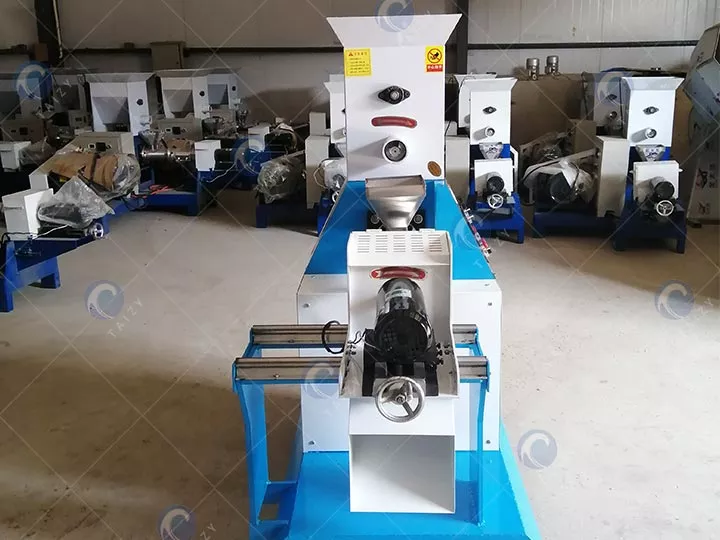What are the benefits of using efficient fish food maker machine?
The use of efficient fish food maker machines is an important technology in modern fish farming. This efficient feed processing equipment not only enhances fish farming results but also reduces the workload of users. In this article, we will introduce the advantages of a fish food pellet machine and its benefits for the users, as well as its positive role in the fish farming industry.
Efficient fish food maker machine in the modern fish farming industry
The use of efficient fish food maker machines is a popular application of technology in modern fish farming. Fish food pellet mills bring many benefits to fish farmers by processing feed ingredients into a uniform pellet form. The fish food extruder machine produced by Taizy can be floating or sink in various forms and shapes. It can meet the different needs of customers. The following are the benefits of using a fish food pellet mill:

Improve the effect of fish farming
The fish food pelleting machine can process the feed materials into uniform pellets to ensure that the various nutrients in the feed are fully distributed. This balanced feed supply can improve the growth rate of fish and breeding efficiency. Fish can more easily digest and absorb the feed in pellet form, enabling them to make full use of the nutrients in the feed and promote healthy growth.

Efficient fish food maker machine reduces workload
The use of fish food pellet maker machines can realize the automatic processing of feed, saving a lot of labor and time. Fish farmers only need to put the feed ingredients into the machine, set the processing parameters, and the machine can automatically complete the processing process. Compared with the manual processing of feed, the fish pellet mill can improve production efficiency and reduce labor costs and work intensity.
Use of affordable fish food maker machine – higher utilization rate of feed
The easy-to-use fish food maker machine improves the density and stability of the feed by fully processing and pressing the feed materials. This makes the feed pellets less likely to be scattered or wasted, effectively reducing the loss of feed. The uniformity and controllability of the feed pellets also avoid the problem of uneven distribution of nutrients in the feed and improve the utilization rate of the feed.

